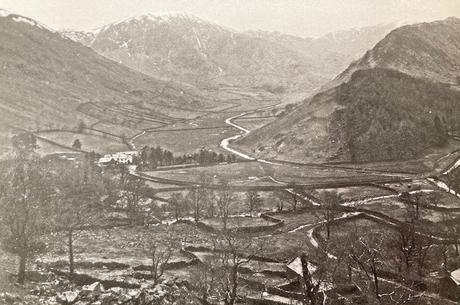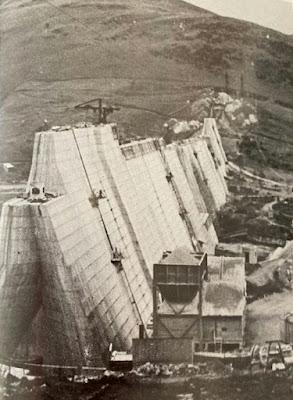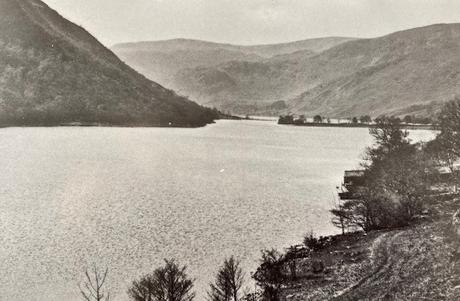
Mardale
The countryside here is remote and it doesn’t take much romancing to think of the idyll of mountains, waters and green pastures, it must have been entrancing a valley enclosed on three sides without traffic except the odd bicycle and car and only the sound of sheep calling, birdsong, and the school/ church bell tinkling among the greensward, but as in all good tales this wasn’t to last.Manchester was left out on a limb after Liverpool turned to North Wales, another source was needed and Mancunian eyes turned to Haweswater, the highest and remotest lake in the Lake District. In 1919 Manchester Corporation secured the Haweswater Act which gave the go-ahead for the creation of a new reservoir from the lake and large catchment area. It was agreed that the lake be increased from 2 1/2 to 4 miles long, the water level to 96 feet. Sir Edward Holt stating: “ In my opinion Haweswater is presently very much over-rated. It will be more beautiful in years to come.”As a huge amount of “manpower” was needed, a village of small bungalows was to be built on the fellside at the entrance to the valley, called Burnbanks. Work on building the dam began in 1930, was postponed because of lack of finance and recommenced in 1934.
construction of the dam
Some of the workers left to join the forces when war broke out, but building continued and was completed in 1942. So the valley became a lake with the old road submerged, the farms, church, the Dun Bull Hotel blown up by the Territorials and only the school survived, being dismantled and rebuilt near Burnbanks. Several thousand people gathered for the last church service with loudspeakers fastened to the church tower. The Bishop of Carlisle stressed he didn’t weep for Mardale as sacrifices had to be made to help the urban populations, the stones of the building to be used for the draw-off tower and the graves had all been relocated.Just think of the mixed feelings, the intense sorrow of the small community the loss of everything they had ever known, being without choice, knowing their homes were wiped out never to be revisited but maybe, just maybe a few people who are seeing new beginnings, new prospects before them.Today, it still feels cut off from the rest of the lakes but it is known for the only Golden Eagles in the country. It is still a wonderful setting tinged with mystery which a cohort of the faithful visit after a particularly dry season when magically those low stone walls, remnants of field and track and bridge appear and can be walked on as though there is no permanence to their drowning.
Haweswater
I couldn’t find a poem about Haweswater or Mardale so opted for poem XL from Housman’s 'A Shropshire Lad ':Blue Remembered HillsInto my heart an air that killsFrom yon far country blows:What are those blue-remembered hills,What spires, what farms are those?That is the land of lost content,I see it shining plain,The happy highways where I wentAnd cannot come again.
Thanks for reading, Cynthia. Email ThisBlogThis!Share to TwitterShare to Facebook
